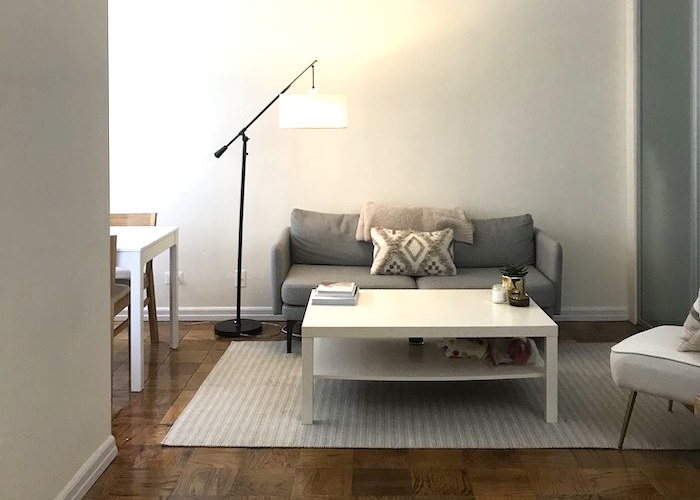Exactly How My Mental Health Has Cost Me $4,000

The ins and outs of health insurance are something that I’m still figuring out, even one year into my first adult job and living on my own. A year ago, you could have asked me my opinions on one-person deductibles, and I would not have been able to explain to you what that meant. Ask me today, and I’ll go off about how ridiculous it is that one person has to pay over $1,000 (or even much more) out of pocket before their insurance coverage kicks in.
Knowing ahead of time that I had to spend $1,300 of my own money before my insurance started to cover things — or even just fully understanding what a deductible was — might have made me choose some different paths for my health this year. Unfortunately, I was already well on the path of change to psychiatrists and getting a handle on my mental health before realizing the financial situation I was in.
A little background: I’ve struggled with anxiety and depression since high school, but it took a really bad couple of episodes in college for me to seek out any medical help. Lucky for me, my college health center offered free counseling services, and I only ever had to shell out money when I needed to pick up my antidepressant prescription, which my dad would reimburse me for out of his health savings account.
This method worked great — until I graduated and suddenly found myself without my usual access to mental health services. In the interest of time and simplicity, I went to the first psychiatry office my family’s GP referred me to, and my dad would let me charge the appointments to his health savings account again. It didn’t register until well after I was into my first job and my own health insurance plan that the health savings account I had seemingly unlimited access to was something you actually had to put money into. It didn’t magically exist with my insurance card.
It was all well and good until my psychiatrist left the practice with no notice, and I took that opportunity to find a doctor closer to my new place. That first appointment was going great, because I liked the doctor, he had a plan to test out new medications to eliminate side effects I didn’t like and that would manage my anxiety better, and he referred me to a therapist that worked in the practice, because we both agreed that going back to talking with someone regularly would vastly improve my mental health. I went to check out at the front desk and was greeted with a $120 bill: the practice required deductibles and copays to be paid up front. In the grand scheme of things, this seemed fine. I would go in monthly at the start, to check in on the new medications, and $120 out of my health savings account seemed reasonable.
And then I went to pick up my new prescription from my local pharmacy. Even the pharmacy tech was shocked when she rang it up. She looked up at me and said, “Uh, this one is going to be $302. Do you want to look online for a manufacturer’s coupon and then come back?” Yes, yes I did want to find a coupon and come back.
I called my insurance provider, my dad, and my new psychiatrist trying to figure out what to do. My dad fully explained deductibles to me, as did my insurance company, and the doctor’s office managed to find a coupon that took $50 off the exorbitant price, because that particular medication didn’t have a generic. I bit the bullet and went back to the pharmacy because, for as much as that price pained me, I was miserable on my then-current medication. I was willing to try anything, even something that cost nearly as much as my car payment. (As luck would have it, that medication did not solve my issues, and I actually had one of my worst-ever depressive episodes on it because it just didn’t work for me. So at least I didn’t have to regularly pay $300.)
Medications aside, I had started therapy again. It was amazing, I loved my therapist, and I was starting to really get into some of my deep-seated issues and finding proper coping mechanisms. But there was one more catch. She didn’t take insurance. And her starting rate was $185 per session. When I faltered at the prospect of weekly sessions when the cost was that high, she was kind enough to knock the price down to $125. It still wasn’t the best-case scenario — my employer changed our insurance policy so we were no longer allowed to apply out-of-network costs to our deductible — but it was a little more reasonable. And all in the name of reclaiming my mental health.
This all started back in February, and it is now August. After six months of therapy and medication-testing, I am finally in a really, really good place with my mental health. It isn’t perfect, but I am stable on a medication I don’t hate, and have been going to therapy weekly or bi-weekly depending on my mental state.
But some quick math:
- Monthly psychiatrist check-ins through May (once I stabilized on medication, I can go in bi-monthly) at $120: $480
- My August check-in: $120
- One terrible medication: $250
- Monthly refills of my not-terrible medication at $30 each since April: $150
- Weekly therapy sessions through June, at $125 each: $2,500
- Bi-weekly therapy from July onward: $500
- Total spent on my mental health since the start of 2017: $4,000
I spend more money on my mental health than I do on anything else in my life, except rent. It’s not something I anticipated when I first set out to live on my own after getting my first adult job. At times, it is incredibly difficult to manage the stress of not having enough money to pay for therapy and putting it on my credit versus the stress of not doing something that I know helps me be better.
I’ve reached a solid enough place where I can go to therapy bi-weekly, which cuts down on my monthly costs, and reduces some of my financial stress. I don’t need to see my psychiatrist every month, because my medication is doing its job, and we’ve pinpointed the correct dose. My medication is not costing me $300 every refill. Yes, it still costs a lot, but I have a stable job that lets me pay those costs that help me be stable and happier. My mental health has definitely been better, but it has also absolutely been worse, so I’m counting myself lucky with my current situation.
Olivia currently works in marketing and likes to say she spends her free time doing yoga and writing, but mostly winds up spending too much time on Twitter and watching HGTV.
Image via Unsplash




